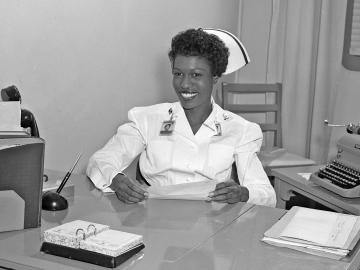ORNL's Communications team works with news media seeking information about the laboratory. Media may use the resources listed below or send questions to news@ornl.gov.
321 - 330 of 863 Results

Every day, hundreds of thousands of commuters across the country travel from houses, apartments and other residential spaces to commercial buildings — from offices and schools to gyms and grocery stores.

When in 1948 Doris Belle Scott, just graduated from Meharry Medical College School of Nursing, sat for her interview for a position at Oak Ridge National Laboratory, the medical director, J.S. Felton, explained the Laboratory's philosophy of industrial health

ORNL manages the Innovation Network for Fusion Energy Program, or INFUSE, with Princeton Plasma Physics Laboratory, to help the private sector find solutions to technical challenges that need to be resolved to make practical fusion energy a reality.

Bruce Warmack has been fascinated by science since his mother finally let him have a chemistry set at the age of nine. He’d been pestering her for one since he was six.

Spanning no less than three disciplines, Marie Kurz’s title — hydrogeochemist — already gives you a sense of the collaborative, interdisciplinary nature of her research at ORNL.

Cement trucks entering and exiting the Spallation Neutron Source are a common sight as construction of the VENUS neutron imaging beamline progresses. Slated for completion and commissioning in 2024-2025, VENUS is the twentieth neutron instrument at SNS and will offer many new capabilities.

A rapidly emerging consensus in the scientific community predicts the future will be defined by humanity’s ability to exploit the laws of quantum mechanics.

To explore the inner workings of severe acute respiratory syndrome coronavirus 2, or SARS-CoV-2, researchers from ORNL developed a novel technique.

A new version of the Energy Exascale Earth System Model, or E3SM, is two times faster than an earlier version released in 2018.

When Brian Fricke walks into a supermarket, evidence of his scientific achievement is all around in the refrigerated cases housing the fresh fruits and vegetables. As an Oak Ridge National Laboratory building equipment researcher, Fricke has a long history of making sure that produce is kept fresh in an energy efficient and environmentally sound manner.

